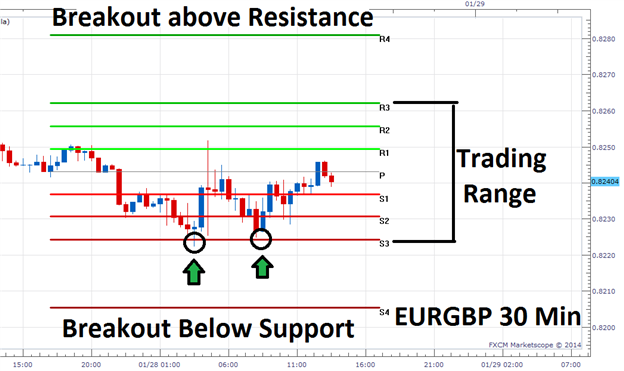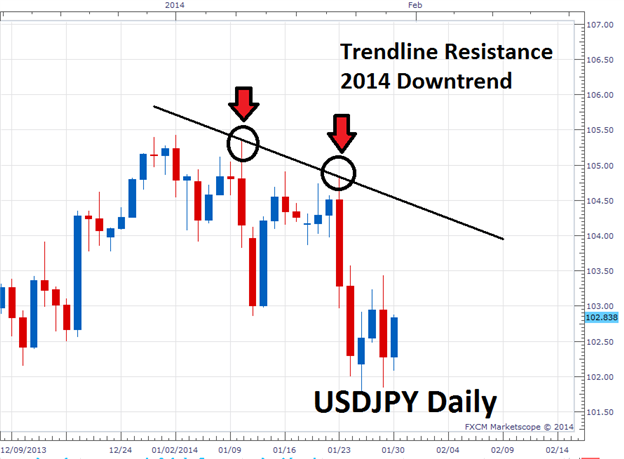Talking Points:
-More than one way to analyze and trade FX
-Chart time frame can impact the resulting trades
-Explore different styles in a demo account
One of the aspects of FX trading I love the most is how there are many different ways to trade the market. The market is large and liquid and there is not just one way to trade it.
Due to the plethora of different methods and strategies available to trade FX, there is likely a method and strategy that likely fits your personality.
Today, we’re going to explore the time frame to use on a chart when technically analyzing the market.
For example, when you create a chart, you’ll see choices from “T” (which is a tic chart) to “M1” (which is a 1 month chart).
The time frame of chart simply means how much data is included within each bar of the chart.
For example, “m1” chart represents a 1 minute chart. This implies that each bar or point on the chart will represent 1 minute of price activity. (Notice in this example a “M1” is monthly while lower case “m1” is 1 minute.)
There are different ways to represent the data on the chart. For example, you can plot a line chart, bar chart, or the more popular candlestick charts.
You can even plot data in a non-time specific format like what a range bar, renko, or point and figure chart would provide. Those types of charts are beyond the scope of this piece, so we will stick with the time based charts.
Most charting packages offer the ability to customize the time frame of your chart as well. Whether you decide to use a custom time frame or an already populated time frame is up to you.
Here is a guide to help you determine what time frame of chart might be appropriate for you. If you are not sure, try out different styles in a free practice account.
Type of Trader Definition Good Points Bad Points Short-Term or Scalper
(1 hour or smaller time framed chart)A trader who looks to open and close a trade within the same day, often taking advantage of small price movements with a large amount of leverage. Quick realization of profits or losses due to the rapid-fire nature of this type of trading. Large capital and/or risk requirements due to the large amount of leverage needed to profit from such small movements. Medium-Term
(1 hour to Daily time framed chart)A trader typically looking to hold positions for one or more days (up to 4 weeks), often taking advantage of opportunistic technical situations. Lowest capital requirements of the three because leverage is necessary only to boost profits. Fewer opportunities because the trader seeks higher expected outcome trades. Long-Term
(Weekly to Monthly time framed chart)A trader looking to hold positions for months or years, often basing decisions on long-term fundamental factors. More reliable long-run profits because this depends on reliable fundamental factors. Large capital requirements to cover volatile movements against any open position.
Still don’t know where to start, consider that shorter time frame charts generally produce more signals. Shorter time frame charts also mean more false signals.
Relatively longer term time frame charts generally equates to less frequent signals.
However, since the formation of the candle requires more time and data to collect, the signals produced tend to be stronger and meaningful to those trends.
Therefore, many traders eventually find a comfort zone in taking signals somewhere in the middle. This generally falls into the 1hr to 4hr charts while utilizing a daily time frame for trend. That is known as multiple time frame analysis and we’ll have more on that topic in future pieces.
---Written by Jeremy Wagner, Head Trading Instructor, DailyFX Education
More...


 12Likes
12Likes LinkBack URL
LinkBack URL About LinkBacks
About LinkBacks







 Reply With Quote
Reply With Quote




















Bookmarks